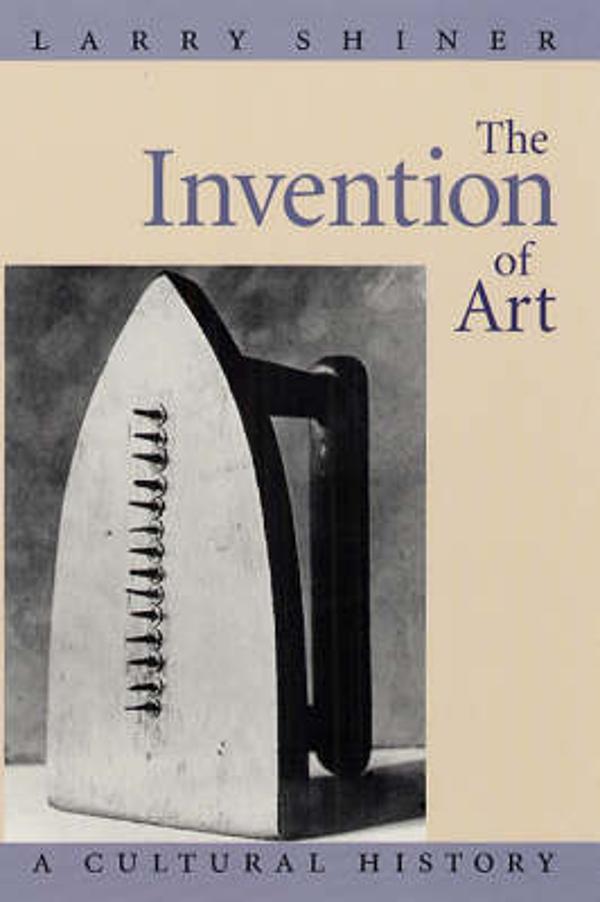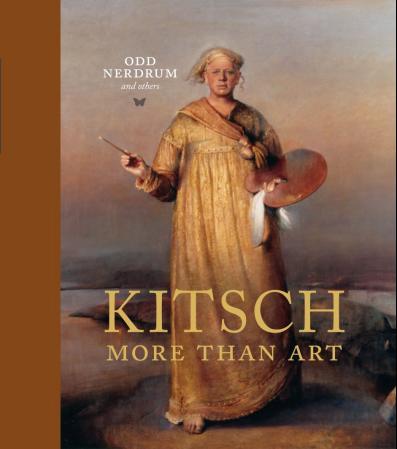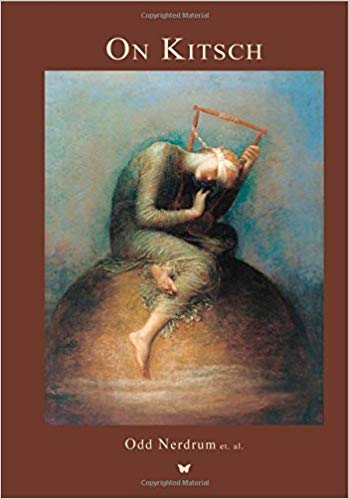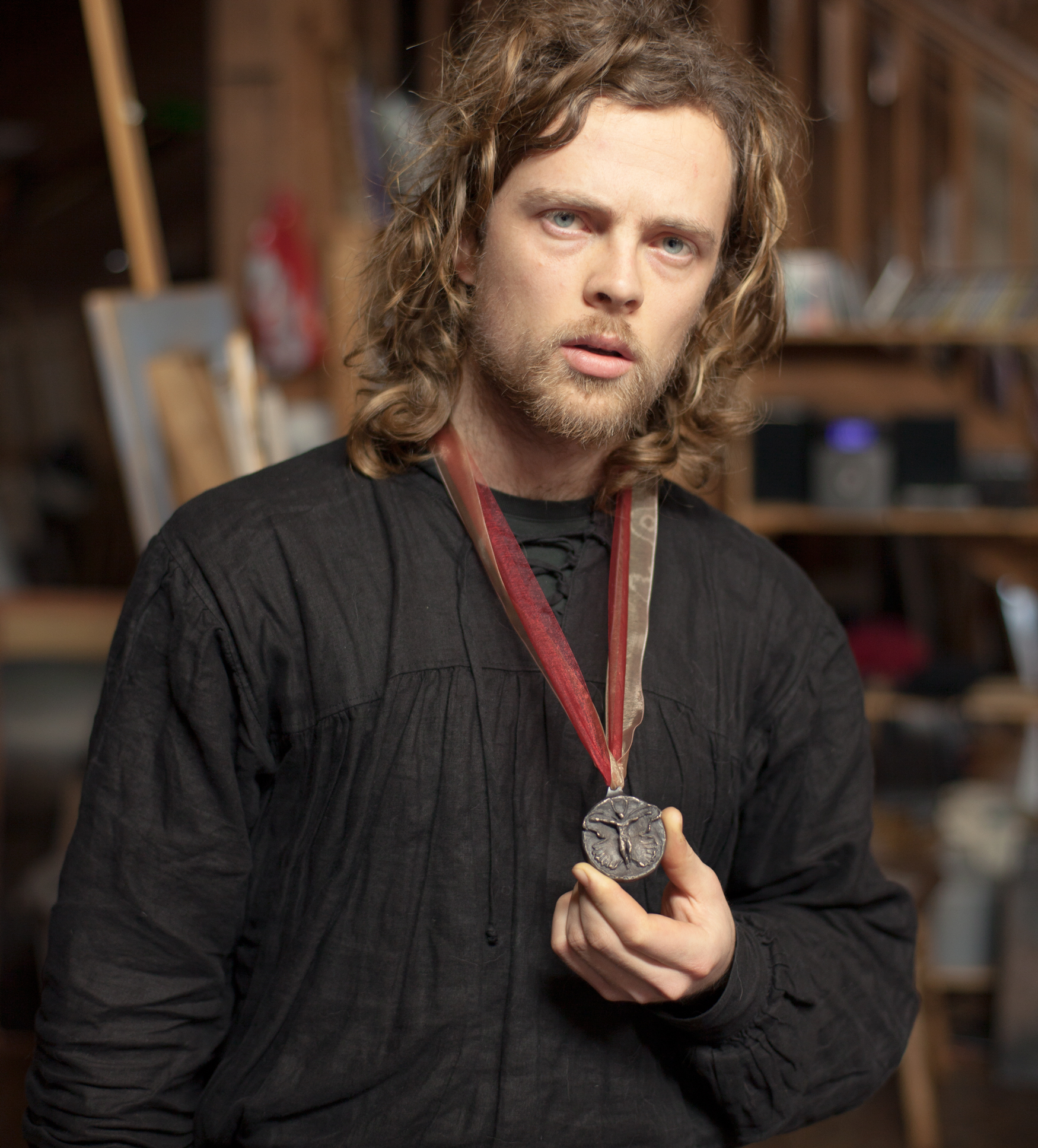With The Invention of Art, Larry Shiner challenges our conventional understandings of art and asks us to reconsider its history entirely, arguing that the category of fine art is a modern invention—that the lines drawn between art and craft resulted from key social transformations in Europe during the long eighteenth century.
Author: Bork S. Nerdrum
Kitsch More Than Art
In Nerdrum’s view, the objects defined as “kitsch” is a consequence of modernism’s “make it new” ethic. For Nerdrum, this insistence on novelty has permeated the thinking of institutions, critics, artists and the public, and has effectively suppressed what Nerdrum most values: sentimentality, passion, pathos and the self-evident skill and emotion of sheer craft. As Nerdrum puts it, “the kitsch painter commits himself to the eternal: love, death and the sunrise.”
On Kitsch
Since its beginning, kitsch has been viewed as poor art, failing to achieve the transcendental, acquired by Fine art. In his own retrospective show at the Astrup Fearnley Museum of Modern Art in Oslo, Odd Nerdrum announced himself as a kitsch painter – proposing a new understanding of kitsch. “On Kitsch” contains essays and speeches by Odd Nerdrum and others, concerning the origin of “art” and “kitsch” and how these definitions developed. The book will give insight to why the art world is where it is today, and why Nerdrum felt he could no longer be a representative of the word “art” and its values.
Why I and many others have stopped using the word “Art”
My father is a painter of stories. Twenty years ago, he stopped calling his work “art”, replacing it with “kitsch”. I was just a few years old and could barely speak, but I remember the dramatic years that followed.
Words have power, they can sentence you to prison, death. They can change the course of civilization.
What my father realized, and which I have come to understand, is that the concept of Art is one of the primary sources for the greatest cultural epidemic this world has seen.
We are living through that epidemic at this very moment.
I hear the echoes of people’s everyday complaints: “look at those ugly, flat buildings — what a travesty!” Or the confused man at the exhibition opening who says “I don’t get art”, leaving the gallery in disbelief. Or the man who ridicules that arbitrary stroke on a canvas, exclaiming: “even I can do that!”, and actually ends up making it himself.
In the end, there is always someone who asks the seemingly stupid question:
“What is art?”
And like many others, you have probably done the same — with good reason. There is a saying that “everything is allowed in art”. Why is it, then, that the vast majority of architecture, painting, and sculpture displayed in public, are in the modernist tradition?
Let me take you on a journey through history to show you why I, my father, and many others have stopped using the word “Art”.
The concept of Art emerges
Until the Age of Enlightenment, the sole meaning of “art” was science — it was not synonymous with personal, creative expression. In the 1740 edition of the french-academic dictionary, “artist” was still defined as “a person working in an art, particularly one who performs chemical operations”.
Six years later, the French philosopher Charles Batteaux grouped painting, sculpture, music, gesture, dance, and poetry together as “the fine arts”.
This is a decisive moment.
For the first time in history, a distinction is made where the handcraftsman comes second to the painter or sculptor — disciplines now lifted to the status of “fine arts”.
Discussion of elevating advanced crafts had flourished since the Renaissance, but in terms of the handcraft itself, the consequences were fatal.
In the second half of the 18th century, “the fine arts” were shortened to “Art” — exemplified in the book “The History of Ancient Art” (1764) by Johann Winckelmann, who also introduced the idea of an “art history”.
Sales catalogs in the 1750s illustrate that the painter’s name now appeared before the painting description, implying that the practitioner had become more important than his product. It was also around this time that Rousseau took note of an emerging group of “self-important fellows” or “artists”.
In his well documented book The Invention of Art (2001), Larry Shiner writes that “modern art is an 18th century invention”.
He could have justifiably dropped “modern” and said “Art” with a capital A.
“Art”, previously a synonym for science, shifted to being an autonomous term. Art became a science in itself.
The philosophers that defined Art
French intellectuals may have coined the term, but German idealists shaped the concept of Art. How did this happen?
Let us first wind the clocks to the 20th century.
In the 1980s, Postmodernism allowed for my father’s success with his baroque paintings in America. Doors that had been sealed off by the avant-garde Art police, were now opened up. Modernist composers such as Arvo Pärt and Henryk Górecki turned to classical music, and classical building techniques in architecture became fashionable once more.
Postmodernism was the idea that all things have equal value or rather that “everything is relative”.
This changed shortly after postmodernism’s heyday.
In the 1990s, modernism returned like a boomerang and has had Western culture in its iron grip ever since.
My father has always looked for answers in philosophy. After Glasnost, it puzzled him that a plague like modernism could regain power — consequently silencing the classical expression.
At the time, having discovered George Friedrich Hegel’s influence on the value system of Art, he held lectures on the subject.
“You make it sound like it’s a conspiracy,” said one journalist in the mid ‘90s, “but it’s not like people organize to promote a different kind of art“.
“No”, my father replied, “Hegel’s spirit of the time can be conspiratorial without people’s awareness, without them paying attention. No one dares to speak their mind because of a totalitarian zeitgeist, everyone’s gagged.”
Hegel declared that all works of art belong to and reflect the spirit of their time — that the past must not be repeated, as it would be a betrayal of progress. He also claimed that the human body could no longer express the spirit and said that “even a useless notion that enters a man’s head is higher than any product of nature.”
Another important aspect of Art is the need for invention.
In 1774, the Scottish professor Alexander Gerrard published an essay describing the Genius of Art as an inventor — equal to the scientist. Homer is particularly highlighted as an exceptional Genius and creator of original Art. His immortal poems were due to “his own penetration”, allegedly because “he lived in times of ignorance” and therefore did not have access to previous models.
Gerrard goes so far as to say that all Homer’s successors are inferior because “in all the arts, invention has been regarded as the only criterion of Genius.”
The most crucial thinker, in terms of forming the concept of Art, was Immanuel Kant. Some recognize him as the father of Art.
In The Critique of Judgment (1790) he writes that the Genius has no need for knowledge, he does not know where his ideas come from, and genius is invalid when work is performed with pleasure. Neither can the public take pleasure in a work made by a Genius, since this would result in an “impure judgment of taste”.
Kant’s aesthetics is the foremost cause for the disinterestedness witnessed in contemporary artists and galleries. It is also the reason why artists fumble more helplessly than a child when drawing.
Is there any possible way to become a master? No, replies Kant. “Everyone agrees,” he says, “that genius must be considered the very opposite of the spirit of imitation.” And “since learning is nothing but imitation, even the greatest competence, i.e. teachability, and capacity, still cannot count as genius.”
In the mid 1990s, when my father re-read Kant’s third critique, the remaining pieces of the puzzle fell in place. Plato’s tyrannic poetry-hostile philosophy laid the foundation, but it was Kant who released the epidemic that continues to disfigure an already famished culture.
What happened to those who did not bow to Kant, Hegel, and the Art police?
Kitsch becomes the nemesis of Art
After the First World War broke out in 1914, Arnold Schönberg wrote a letter to Alma Mahler, about his colleagues Bizet, Ravel and Stravinsky. Ready for battle, he proclaims “now we shall enslave those mediocre kitschmongers, teach them to venerate the german spirit, and to worship the german god.”
No one can point to the exact birthplace of kitsch, but the term is thought to have come into being in Munich ateliers in the 1880s. Considering the relatively new concept of Art and the discussions concerning what was allowed and not allowed in Art, it is not strange that a word like kitsch was launched as its sinful stepbrother.
The disinterestedness of Art thus got its nemesis in the sentimentality of Kitsch. Originality got its nemesis in the copying of Kitsch; and the spirit of the time — in the pastiche of Kitsch.
“Kitsch is the contemporary form of the Gothic, Rococo, Baroque,” it is written in the unfinished play Kitsch (1917) by the German dramatist Frank Wedekind.
The lack of the spirit of the time explains why the Art police burn-marked the so-called “eclectic” 19th century architecture as “kitsch”.
“If the embodiment of the fundamental idea of our age were to be found in Victorian architecture,” writes Hermann Broch in 1933, “then our age would undoubtedly be called the ‘age of kitsch.’”
Monumental classical buildings, under construction at the turn of the 19th century, were not in accordance with the fashions (spirit) of the time and were denounced as kitsch. One example is Neuschwanstein castle in Germany — the infamous “King of kitsch”. Another is the Victor Emmanuel II Monument in Rome, recently dismissed by a journalist in The Glasgow Herald as a “gigantic piece of 19th century kitsch masquerading as classical architecture.”
The fierce criticism gives the impression that kitsch is an evil sin that must be eliminated. It is “deceptive,” writes Clement Greenberg (high priest of avant garde), “It has many different levels, and some of them are high enough to be dangerous to the naive seeker of true light.”
The problem is not beauty, Herman Broch writes, on the contrary, kitsch wallows in beauty. He goes on to argue that its shortcoming is not aesthetic, but ethical:
“A person who produces Kitsch is not someone who produces inferior art. He is not short on skills and can definitely not be judged by aesthetic standards. He is quite simply a bad human being. He is morally reprehensible, a criminal seeking what is radically evil. Or to put it more directly: he is a pig. Kitsch is all that is evil in art.”
Kitsch, another word for ‘Classical’
If you remove the negative connotations, it is not difficult to conclude that kitsch is another word for classical.
Through Aristotle’s call for mimesis, storytelling, and virtue, Europe recreated Hellenistic Greece — the Italian Renaissance.
The modern phenomenon of labeling works by painters like Titian, Michelangelo, and Caravaggio as “Art” is an anachronism which goes hand in hand with the misleading narrative of cultural progression through the ages.
It is not difficult to understand why my father — after all of those years being called an “anti-artist”, criticized for making sentimental, pastiche, theatrical images — decided to declare himself as a kitsch-painter.
The kitsch and Greco-Roman values are one and the same. They are about your inner longings, the sensual, and the timeless.
“Everything is allowed in Art,” they say. That is correct, insofar as it is not kitsch and has been sanctioned by the Art police.
My father, since he left the Art academy as a young man, devoted himself to Rembrandt and the old masters — a tradition preceding the invention of Art in the 18th century. The same goes for his colleagues Sebastian Salvo, Mark Belicario, Molly Judd, Cheng Wu, and Jan-Ove Tuv, to name a few.
The Greco-Roman tradition values learning through imitation of nature, technical virtuosity, and storytelling. This precedes Art — a term which in reality marked the separation of spirit from craft.
“I don’t get Art,” people say. But you should. For as long as the perpetuation of Art is kept alive, it will rest upon culture as a sludge blanket.
This is the reason why my father and I, as well as many others, stopped using the word “Art” to refer to the classical handcrafts.
In the name of Kitsch, so should you.



